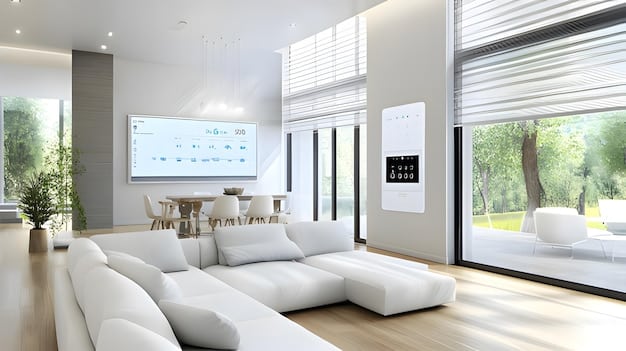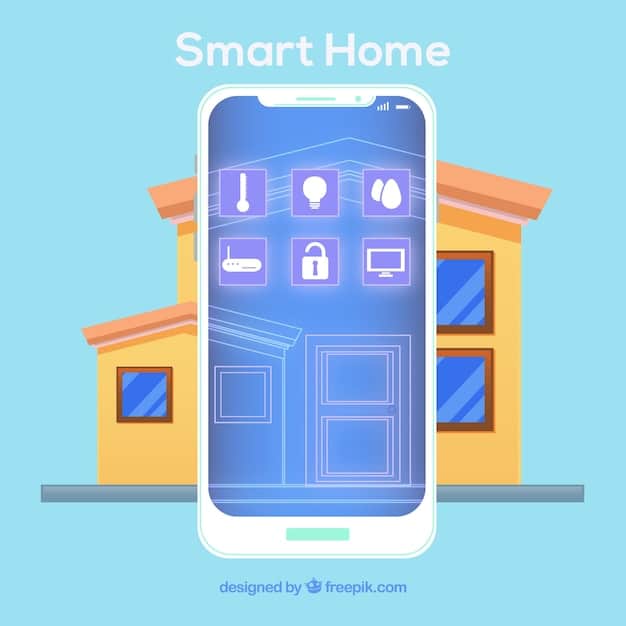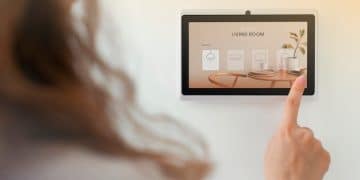Automate Your Window Blinds for $200: A Step-by-Step DIY Guide

Automating your window blinds can be achieved for around $200 through a step-by-step DIY process, enhancing your smart home functionality and providing convenience and energy savings.
Imagine controlling your window blinds with the touch of a button or setting them to automatically adjust based on the time of day. With this DIY guide, you can automate your window blinds for $200 and transform your living space into a smart home haven.
Why Automate Your Window Blinds?
Automating your window blinds offers a multitude of benefits, from enhancing convenience to improving energy efficiency. By taking control of natural light and heat, you can create a more comfortable and sustainable living environment.
Enhanced Convenience
One of the primary advantages of automated blinds is the convenience they offer. No more manually adjusting each blind individually. With automation, you can control all your blinds simultaneously with a remote, smartphone app, or voice command.
Improved Energy Efficiency
Automated blinds can significantly improve your home’s energy efficiency. By automatically adjusting to block sunlight during peak hours, they help reduce heat gain in the summer, lowering your air conditioning costs. In the winter, they can be programmed to open and let sunlight in, providing natural warmth.
- Save on energy bills by regulating sunlight.
- Protect furniture from UV damage.
- Set schedules for automatic adjustments.
Automating your blinds is not just about convenience; it’s also a smart financial decision that can lead to long-term savings and a more comfortable home environment.
Gathering Your Supplies
Before starting your window blind automation project, you need to gather all the necessary supplies. This section will help you compile a comprehensive list of materials and tools required, ensuring a smooth and efficient installation process.
Motorized Blind Kit
The core component of your automated blinds is the motorized blind kit. These kits typically include a motor, remote control, and mounting hardware. Look for kits that are compatible with your existing blinds and offer the features you desire. Many kits also offer smartphone app integration.
Additional Tools and Materials
In addition to the motorized blind kit, you’ll need a few basic tools and materials to complete the installation. These include:
- Screwdriver set (Phillips and flathead)
- Measuring tape
- Pencil
- Drill

With all your supplies gathered, you’re ready to begin the first step of the installation process: removing your existing blinds and preparing them for the motorization kit.
Step-by-Step Installation Guide
This section provides a detailed, step-by-step guide to installing your motorized blind kit. Follow these instructions carefully to ensure a successful and safe installation.
Step 1: Remove Your Existing Blinds
Start by carefully removing your existing blinds from the window frame. Unscrew any mounting brackets and set the blinds aside. Take care not to damage the blinds, in case you need to revert to manual operation in the future.
Step 2: Install the Motor
Next, install the motor according to the manufacturer’s instructions. This usually involves attaching the motor to the blind’s headrail using the provided brackets. Ensure the motor is securely mounted and aligned correctly.
Step 3: Connect the Wiring
Connect the wiring from the motor to the power source. This may involve plugging the motor into an outlet or wiring it directly to your home’s electrical system. If you’re not comfortable working with electricity, it’s best to consult with a qualified electrician.
- Double-check all connections for safety.
- Use wire connectors to ensure secure connections.
- Follow the manufacturer’s wiring diagram.
By meticulously following each step, you can ensure that your automated blinds operate smoothly and safely for years to come.
Integrating with Your Smart Home System
Once you’ve installed your automated blinds, you can integrate them with your existing smart home system for seamless control and automation. This section outlines how to connect your blinds to popular smart home platforms like Alexa, Google Home, and Apple HomeKit.
Connecting to Alexa
To connect your blinds to Alexa, you’ll need to enable the appropriate skill in the Alexa app. Search for the skill that corresponds to your motorized blind kit’s manufacturer and follow the instructions to link your account. Once linked, you can control your blinds with voice commands like, “Alexa, open the blinds.”
Connecting to Google Home
The process for connecting to Google Home is similar to Alexa. Open the Google Home app, navigate to the “Add Device” section, and select the relevant smart home platform. Follow the on-screen instructions to link your account. You can then use voice commands like, “Hey Google, close the blinds.”

Integrating your automated blinds with your smart home system not only enhances convenience but also unlocks advanced automation possibilities, such as setting schedules, creating scenes, and linking your blinds to other smart devices.
Troubleshooting Common Issues
Even with careful installation, you might encounter some common issues with your automated blinds. This section provides troubleshooting tips to help you resolve these problems and ensure your blinds operate smoothly.
Motor Not Responding
If the motor isn’t responding to the remote or smart home commands, first check the power supply. Ensure the motor is plugged in and the outlet is working. If the power is fine, try resetting the motor by pressing the reset button (usually located on the motor itself).
Blinds Not Moving Smoothly
If the blinds aren’t moving smoothly, check for any obstructions in the track. Make sure the blinds are properly aligned and not rubbing against the window frame. You may also need to lubricate the track with a silicone-based lubricant.
- Verify the remote’s batteries.
- Check for software updates for your smart home hub.
- Consult the manufacturer’s support resources.
With these troubleshooting tips, you can quickly resolve most common issues and keep your automated blinds operating at their best.
Maintenance and Long-Term Care
To ensure your automated blinds last for years to come, it’s essential to perform regular maintenance and care. This section provides guidance on how to keep your blinds clean, lubricated, and in good working order.
Cleaning Your Blinds
Dust your blinds regularly with a microfiber cloth or vacuum with a brush attachment. For stubborn stains, use a damp cloth with a mild detergent. Avoid using harsh chemicals or abrasive cleaners, which can damage the blind material.
Lubricating the Motor
Periodically lubricate the motor and track to ensure smooth operation. Use a silicone-based lubricant specifically designed for blinds. Apply a small amount of lubricant to the moving parts and wipe away any excess.
By following these simple maintenance tips, you can extend the lifespan of your automated blinds and enjoy their benefits for years to come.
| Key Point | Brief Description |
|---|---|
| 💡 Cost-Effective Automation | Automating blinds for around $200 is an affordable smart home upgrade. |
| 🔆 Energy Efficiency | Automated blinds help regulate sunlight, reducing energy bills. |
| 🛠️ Simple DIY Installation | Follow our step-by-step guide for easy motor installation. |
| 📱 Smart Home Integration | Connect your blinds to Alexa, Google Home, or other systems. |
Frequently Asked Questions
▼
Automating blinds can typically cost around $200 depending on the kit and accessories you choose. This cost includes the motor, remote, and other necessary parts.
▼
Yes, most standard blinds can be automated using a DIY motorization kit. Ensure that the kit is compatible with your blind type and size for a seamless installation.
▼
Automated blinds can integrate with systems such as Alexa, Google Home, and Apple HomeKit, providing you voice and app control options.
▼
Check power connections, reset the motor, and ensure there are no obstructions in the track. Refer to the manufacturer’s guide for specific troubleshooting steps.
▼
Clean your blinds regularly, lubricate the motor as needed, and inspect all components for any wear and tear. This will help maintain optimal performance.
Conclusion
Automating your window blinds for around $200 is a worthwhile investment that adds convenience, improves energy efficiency, and enhances your smart home experience. By following this step-by-step guide, you can easily transform your current blinds into a smart, automated system.





